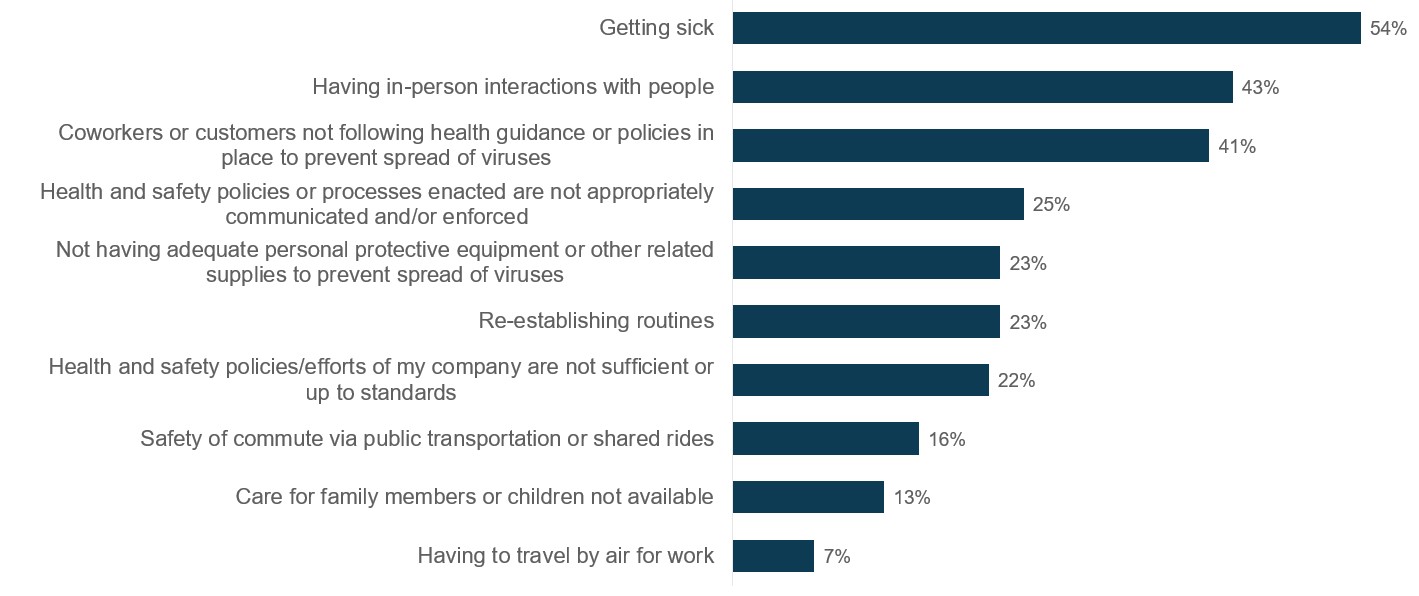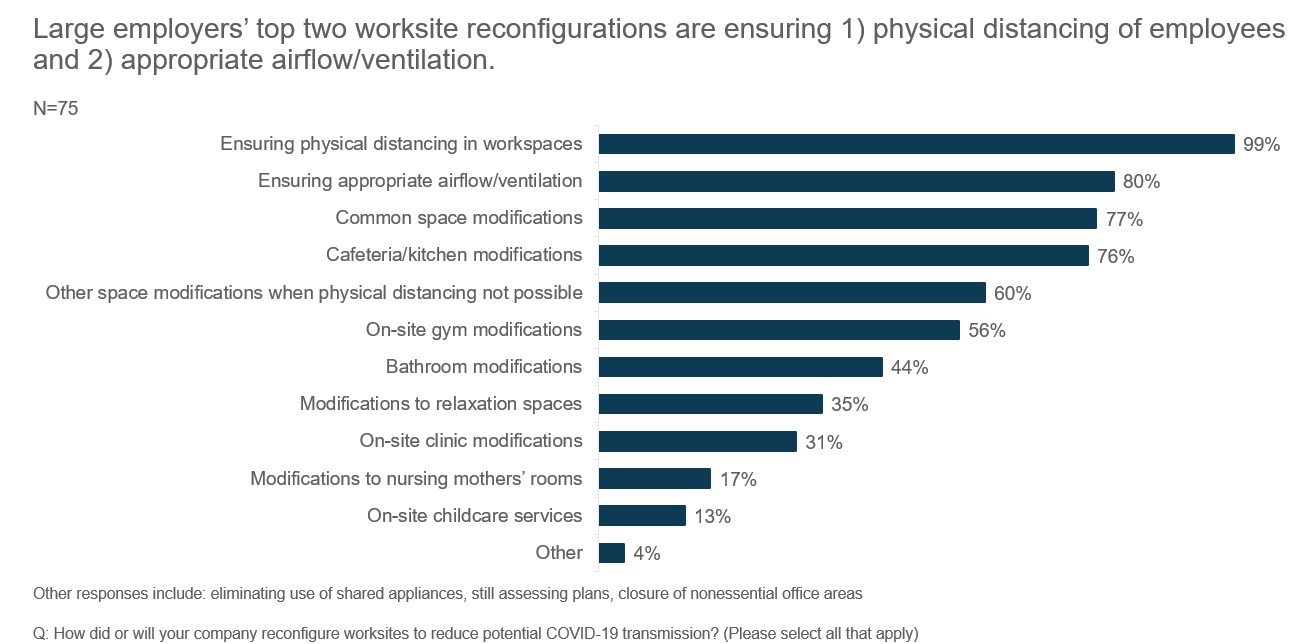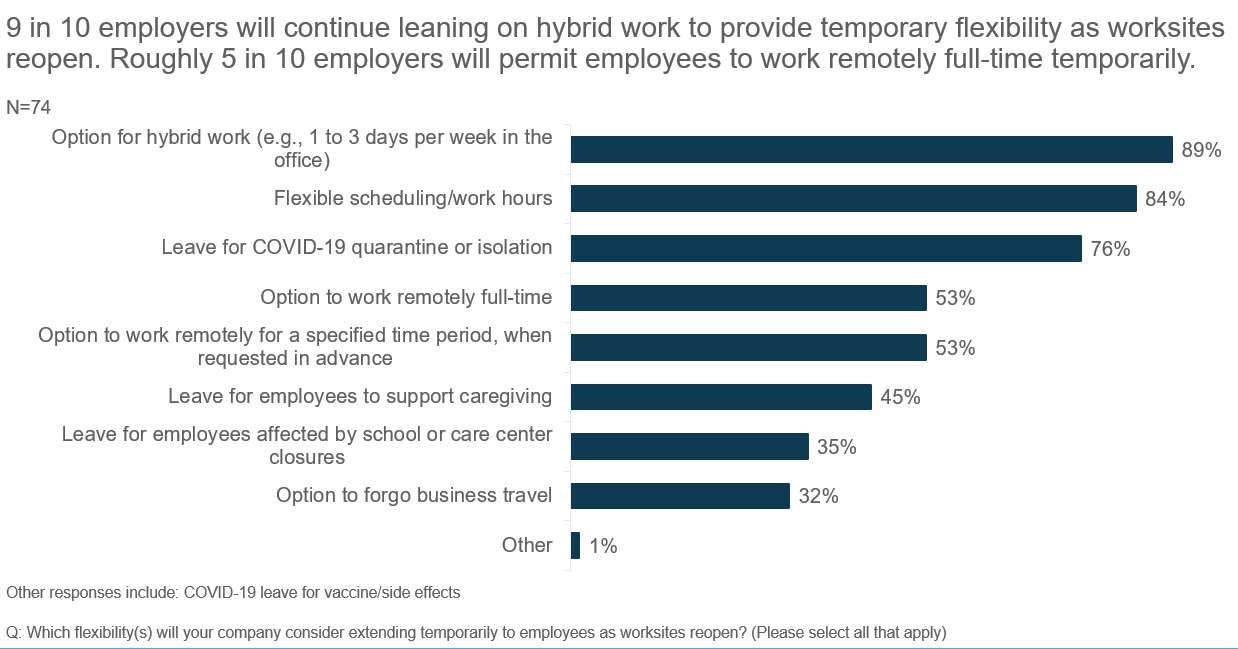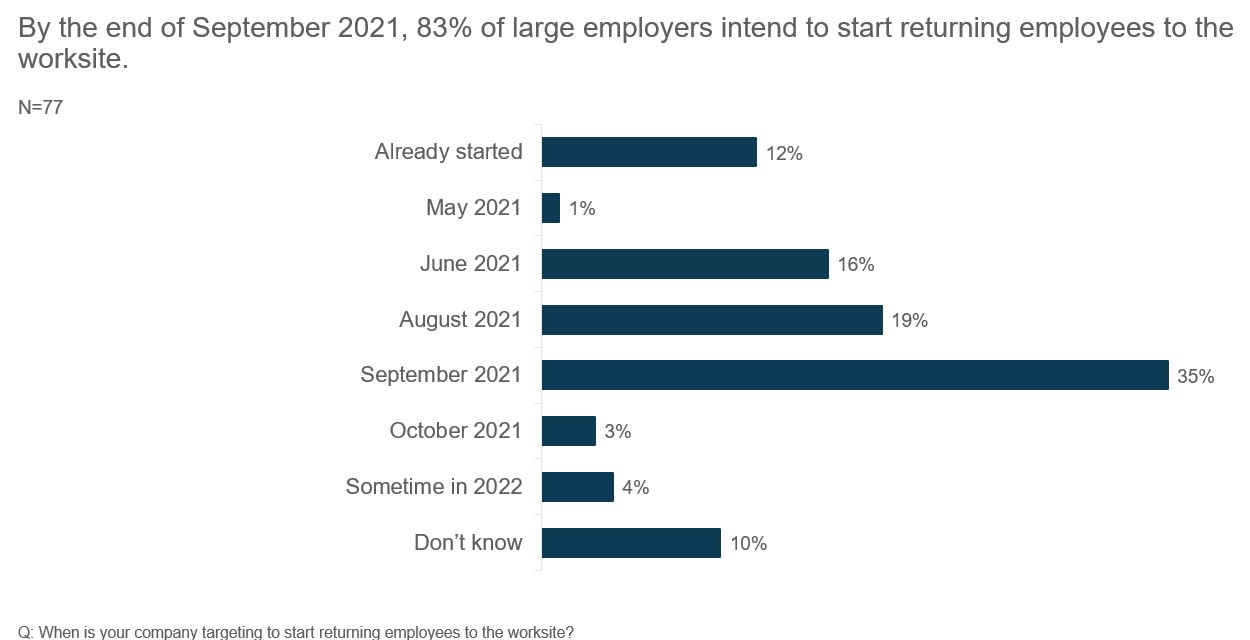With vaccination rates among U.S. adults leaping over the 60% hurdle, fully reopening worksites is starting to become a reality.1 While employers are working diligently to ensure a smooth transition to a healthy and safe workplace, some employees still have a number of concerns, ranging from changing schedules and long commutes, to perceived risk of COVID-19 infection and social anxiety. These are all valid fears that are not surprising to employers, who fully recognize the personal and professional turmoil employees have undergone in the past 14 months.
This blog sheds light on the top five concerns of employees and ways employers are actively addressing these concerns through benefits, programs, communications and supports.

Employee Concern #1: I’m worried I’m going to get COVID from my co-workers or customers.
According to the 2021 Employee Wellbeing Mindset Study, 54% of employees are worried about getting sick; an additional 41% lack confidence in their fellow employees and/or customers to follow health guidance on ways to prevent COVID from spreading (Figure 1).
Employer Response: Even before an employee enters the workplace, the best way to protect against COVID is getting vaccinated. While most employers aren’t requiring vaccination, many are offering incentives, paid time off and the opportunity to get vaccinated directly on-site. In addition to vaccination, employers are providing masks at the worksite (83% do so), and many may continue to do so as employees—both vaccinated and unvaccinated—return to the worksite. Figure 2 shows other ways employers are creating healthy workspaces – with physical distancing, proper airflow/ventilation and common space modifications as the top three approaches.

Source: Quick Survey Findings: 2021 Return-to-Worksite Plans
Employee Concern #2: I’m not used to interacting with co-workers in-person.
Between lockdowns in the early days of the pandemic and rapid ubiquity of video conferencing, many employees may wonder, and worry, about working with others in real life. In fact, 4 in 10 employees have this concern (Figure 1), which could lead to social anxiety and feeling overwhelmed.
Employer Response: Employers recognize that going from working in physical isolation to a workplace with many people can be overwhelming, so nearly all (89%) will offer a hybrid work arrangement in which employees can work some days from home and some days at the worksite. Some (53%) are even going so far as to offer a full-time remote work arrangement beyond the pandemic (Figure 3). However, the reality is that many employees will need to re-adapt to the pre-pandemic working environment; employers can help by providing managers with mental health training (including ways to apply empathy), introducing resiliency training to employees and pointing to the employee assistance program (EAP) as a place to go for one-on-one support.
Employee Concern #3: I’m going to need to establish a new routine.
Employees have reallocated time previously spent on commuting, packing a lunch and getting dressed in “real clothes” to other ways to spend their free time. Many may need to unravel familiar routines like getting more sleep, quality time with family and taking up a hobby – all sources of positive well-being.
Employer Response: Employers are taking a two-pronged approach to this concern, which is one of flexibility and support. Many are phasing employees back into the worksite so individuals can take baby steps in establishing new routines. In fact, only 22% of employers plan to bring back employees all at once. Once worksites do reopen, 84% of employers plan to temporarily offer flexible hours and schedules to ease the burden of a new routine and allow for some wiggle room in getting back into the swing of things (Figure 3). Additionally, employees’ well-being journey shouldn’t stop when they return to the office – employers may want to ramp up on-site offerings of healthy activities like step competitions, yoga and mindfulness practice to help employees continue these healthy practices within the context of a busier workday.

Source: Quick Survey Findings: 2021 Return-to-Worksite Plans
Employee Concern #4: Riding public transportation will increase my risk of getting COVID.
For employees reliant on public transportation, the idea of getting on a crowded bus or packed subway car may increase their hesitancy about going to work (Figure 1). While public transportation systems have their own ways to create a safe riding experience, their approaches may not be enough reassurance for employees to feel comfortable riding next to a group of strangers.
Employer Response: One-quarter of employers are taking employees’ comfort level in using public transportation into consideration when designing their return-to-worksite plans. Again, employers should lead with reminding employees that getting vaccinated is the best way to protect themselves from getting COVID in any setting. Additionally, some employers have offered employees reimbursements or credits for using ride-sharing services on a temporary basis.
Employee Concern #5: I worry about getting care for my children or leaving my pets at home.
Among those surveyed, 13% are worried about securing care for their children in order to return to work (Figure 1). Employees worry that they won’t “be there” for those who they’ve spent additional time caring for during the pandemic.
Employer Response: This separation anxiety felt by employees, their family members and pets should be recognized by both leaders and supervisors. On the strategy side, two of the leading factors in deciding when to return employees to the worksite are schools reopening and the availability of childcare. Employers can support employees by pointing them to resources that can connect them with caretakers in the community: childcare providers, the EAP or search sites like care.com.
By September, 83% of large employers will start bringing employees back to the worksite (Figure 4). By recognizing and honoring employee concerns and responding to these anxieties with tools and benefits, employers will be well positioned for a successful return-to-worksite in the fall.

Source: Quick Survey Findings: 2021 Return-to-Worksite Plans
References
- 1 | U.S. Adults 18+ who have received at least one dose of the vaccine. Source: Centers for Disease Control and Prevention. COVID Data Tracker. Available at: https://covid.cdc.gov/covid-data-tracker/#vaccinations. Accessed May 27, 2021.
